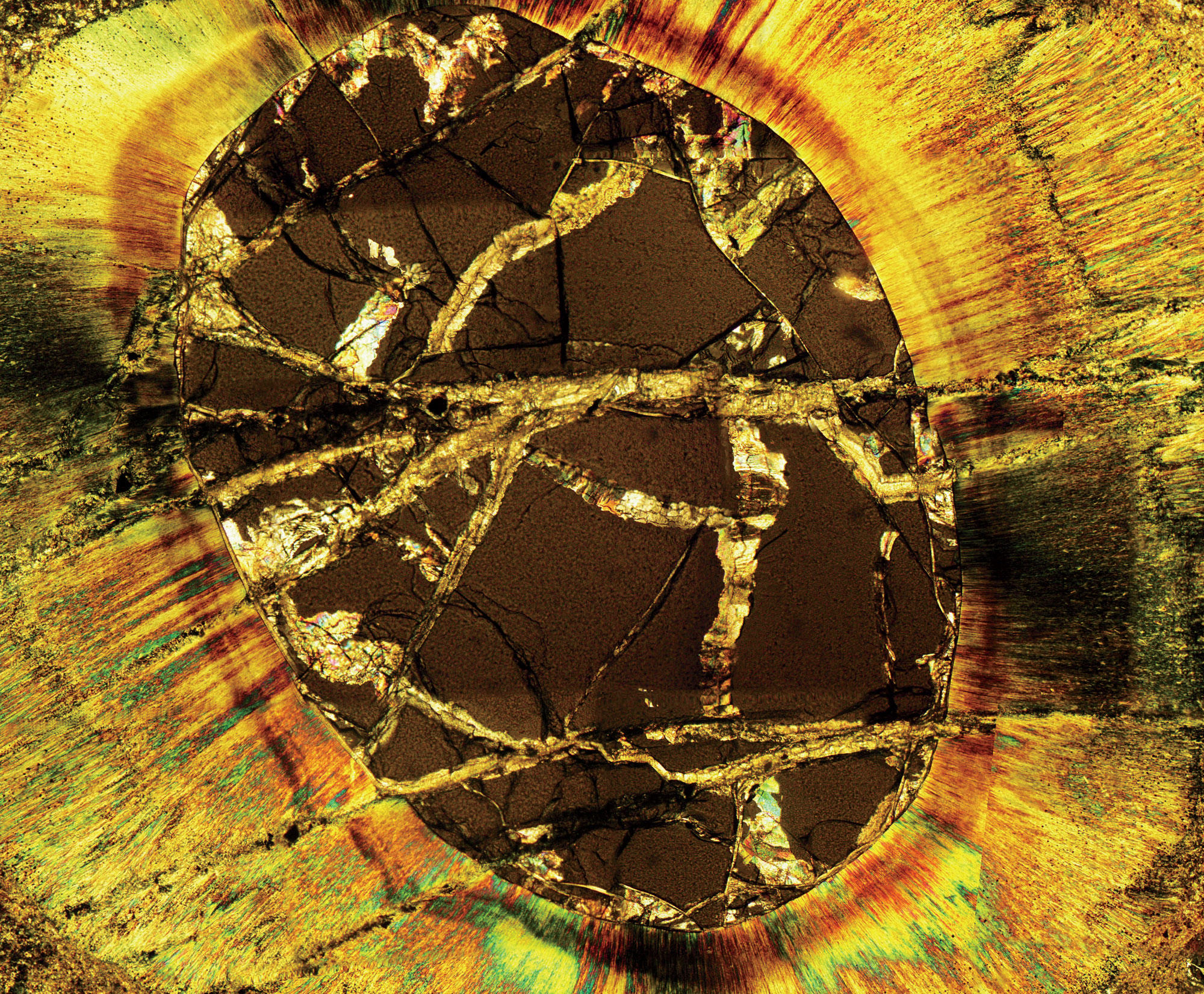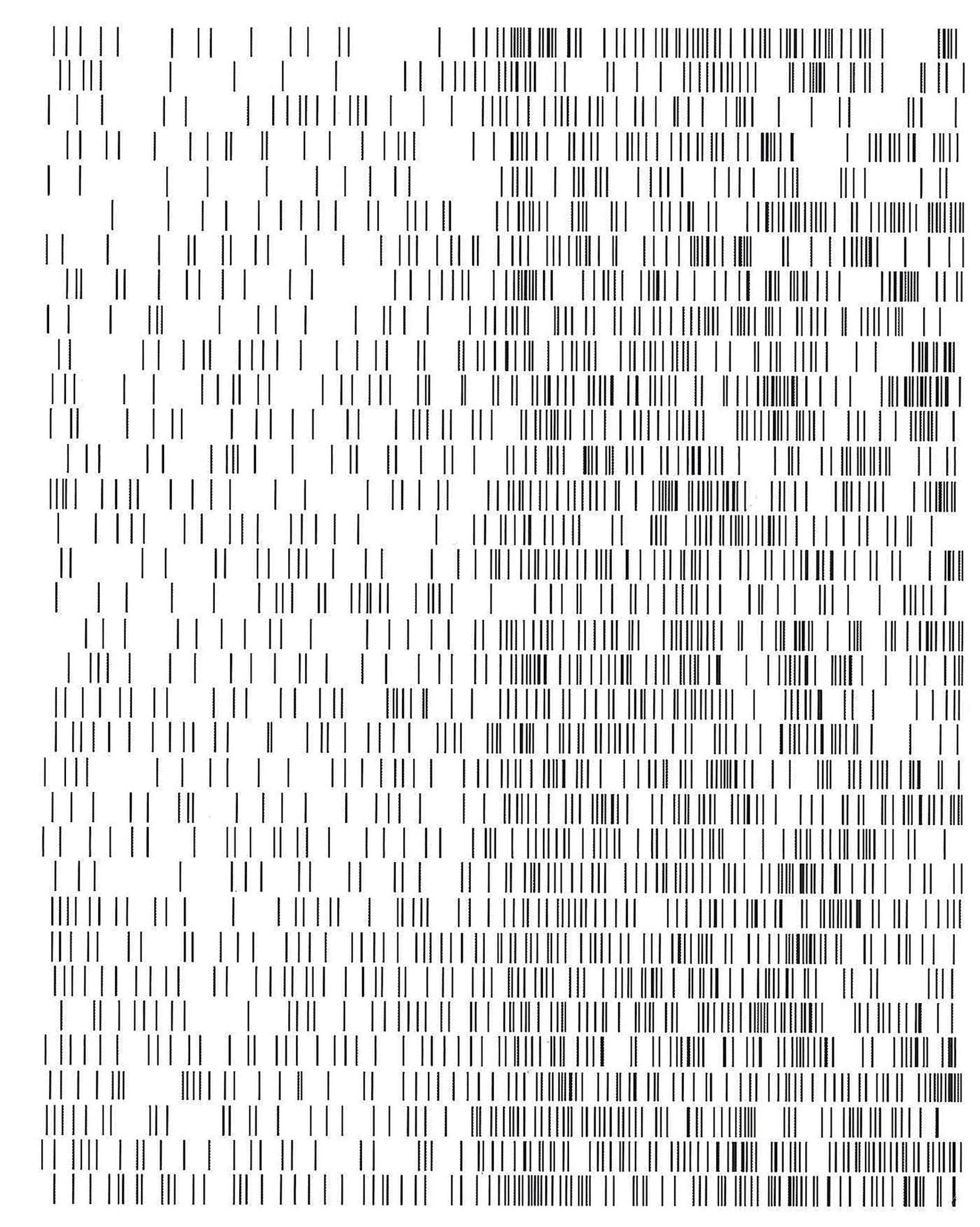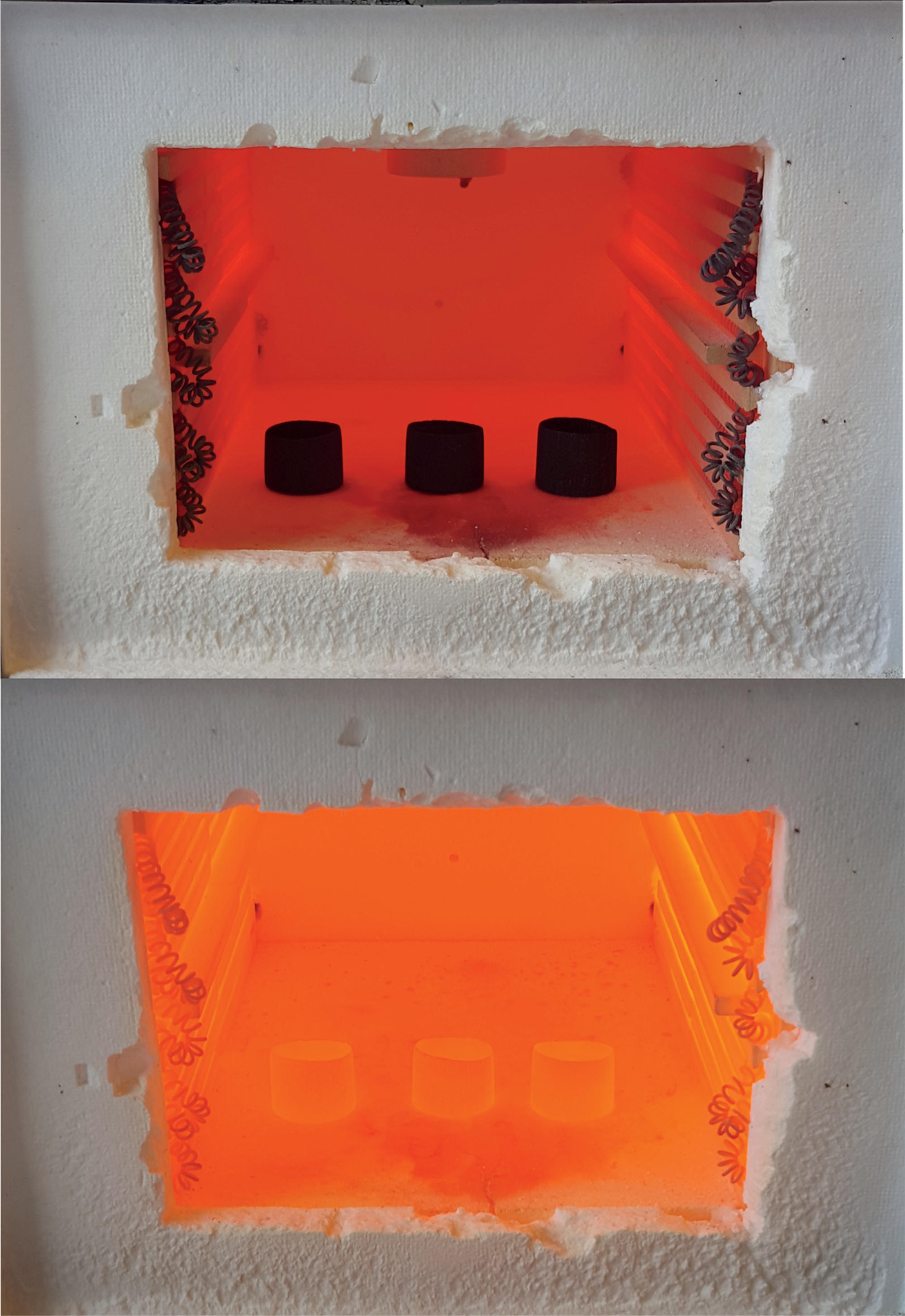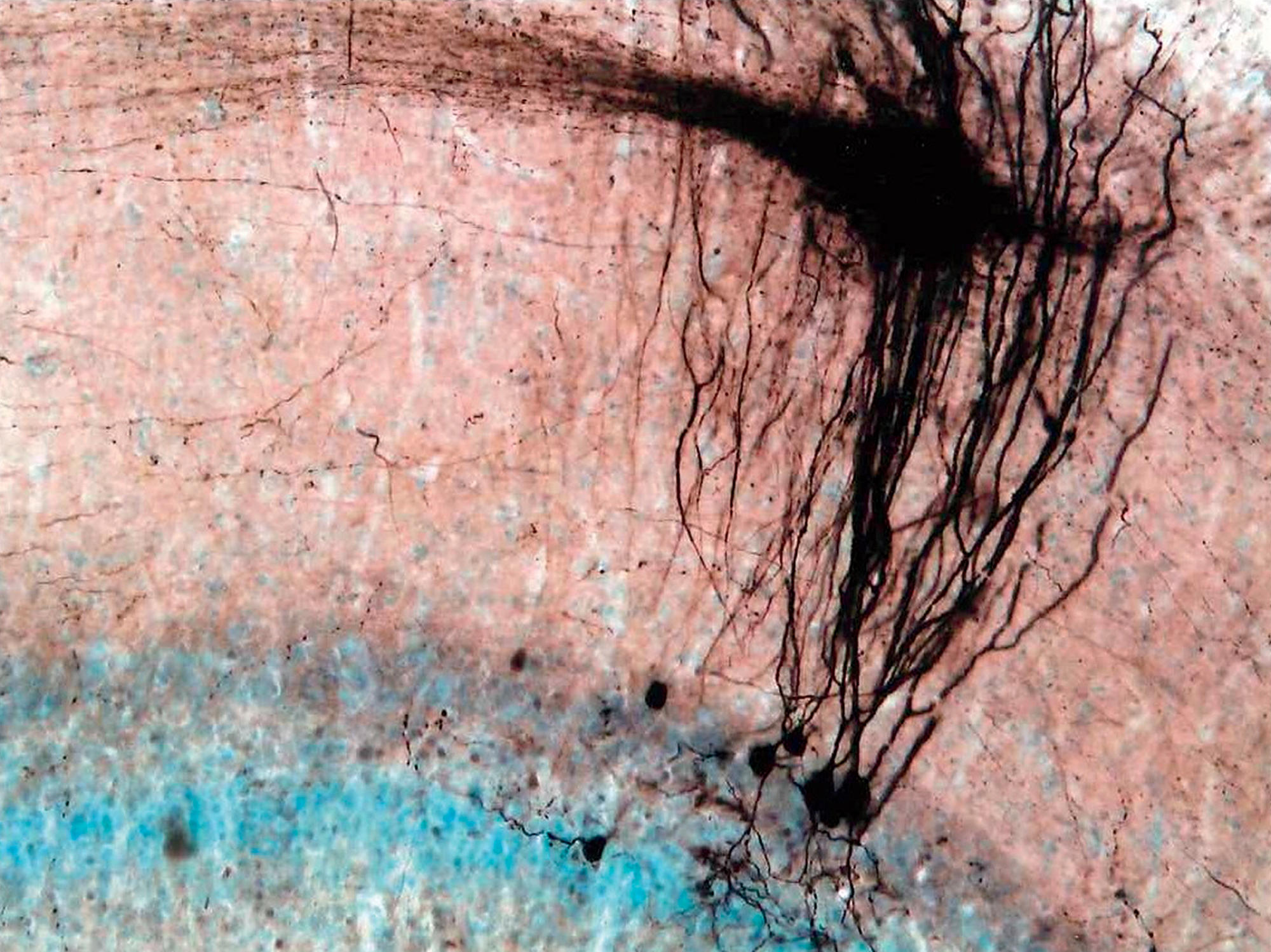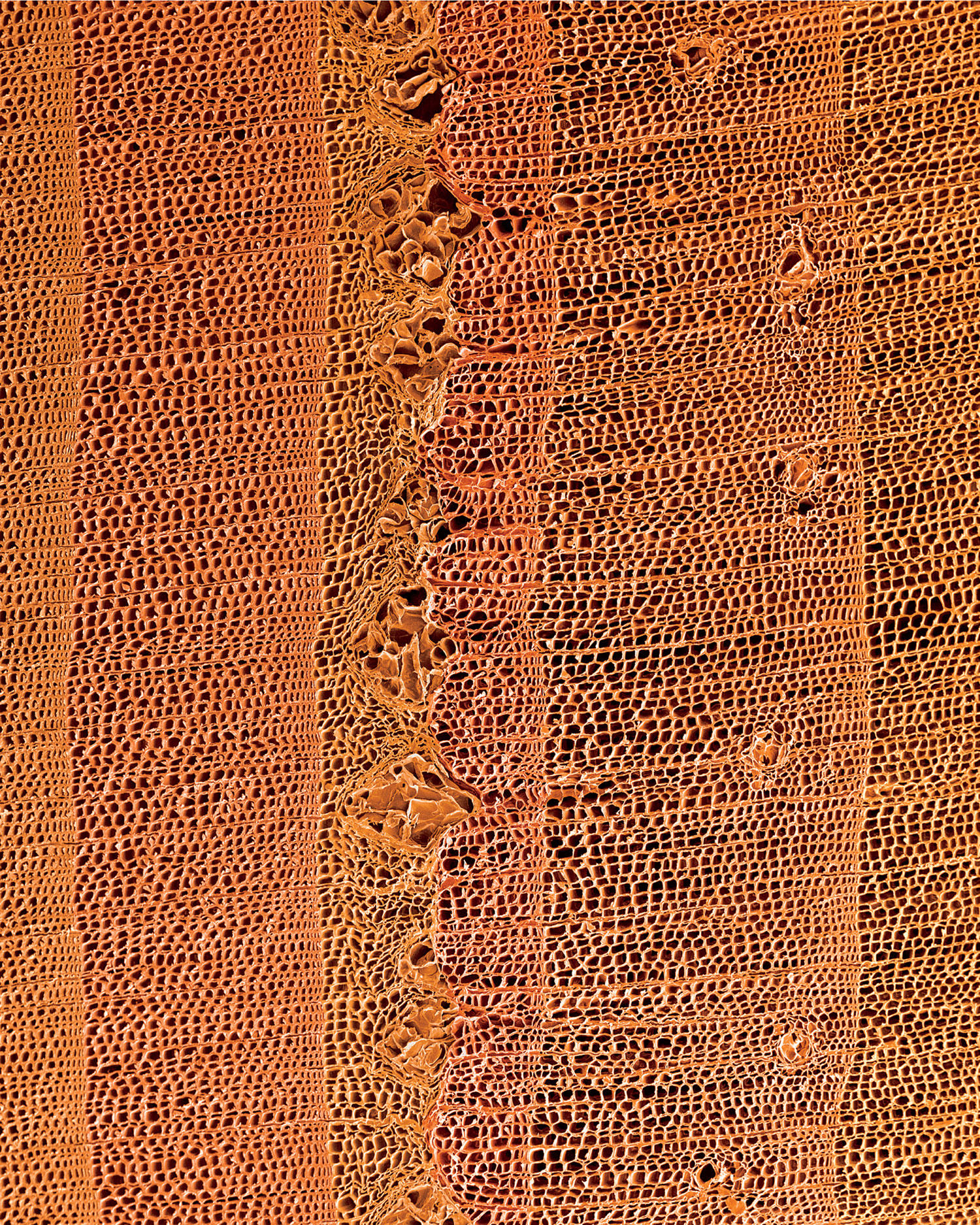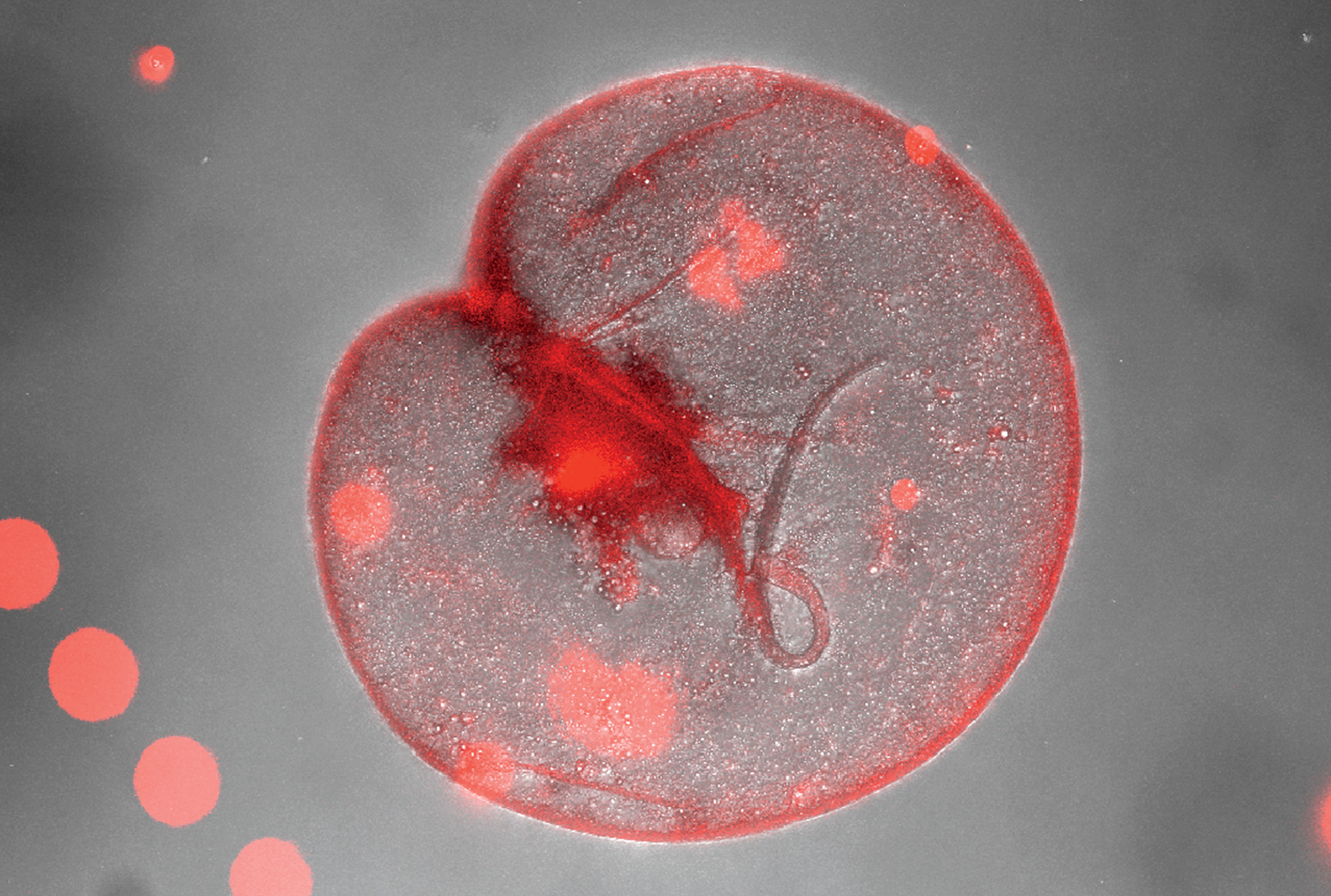
Rhapsody in red (above). This image of a red "Noctiluca" alga was produced by Alexandra Bausch, a PhD student in earth and environmental sciences who is studying how the single-celled organism can proliferate to form massive blooms in oxygen-depleted waters. The pink orbs are caused by reflected light from smaller, bio-fluorescent algae passing in front of the "Noctiluca." / Photograph by Alexandra Bausch
The metamorphosis. Anna Claire Barth, a PhD student in earth and environmental sciences, photographed a cluster of minerals that underwent a transformation on their way to the earth’s surface. The garnet crystal in the center formed under intense heat and pressure, while the mica around the edges took shape under less severe conditions. / Photograph by Anna Claire Barth
Portrait of a memory. Each stroke in this chart represents the firing of a single neuron in the brain of a test subject. The study, conducted in the laboratory of Zuckerman Institute neuroscientist C. Daniel Salzman, explored how neural responses change as subjects form memories about picture on a computer screen. / Photograph by C. Daniel Salzman
Still life. This lava from Hawaii’s Kilauea volcano hardened just a few weeks before Columbia seismologist Einat Lev photographed it, in February 2015. Its texture is the result of a crust forming while the molten lava was still moving. This is characteristic of a type of lava flow that scientists call "pahoehoe," from the Hawaiian verb "hoe," meaning “to paddle,” since the surface resembles ripples of water. / Photograph by Einat Lev
Orange Diptych. Emily H. G. Cooperdock ’11CC took these two photographs of minerals being heated in a furnace at Lamont-Doherty Earth Observatory. The top photo shows three graphite crucibles filled with powdered rock just moments after being placed in the furnace. The bottom photo shows the crucibles heated to 1,050 degrees Celsius, their contents now liquefied and ready for chemical analysis. / Photograph by Emily H. G. Cooperdock
Neuron dance. Zuckerman Institute neuroscientist Nate Sawtell is studying the brain of the elephant-nose fish to understand how neurons assimilate sensory information. Pictured here are a half-dozen neurons. Their main bodies are the dark ovals at the bottom of the image. They have sent branches, called dendrites, upward to receive signals from the thread-like axons of other neurons streaming in from the left. / Photograph by Nate Sawtell
The ring cycle. This sample of tree rings was taken from an ancient Siberian pine in Mongolia by the late Columbia dendrochronologist Gordon Jacoby ’71GSAS. The two distorted rings in the center, which represent the years 536 and 537, indicate a drastic cooling that occurred in the northern hemisphere, possibly the result of volcanic activity or an asteroid impact. / Photograph by Dee Breger
